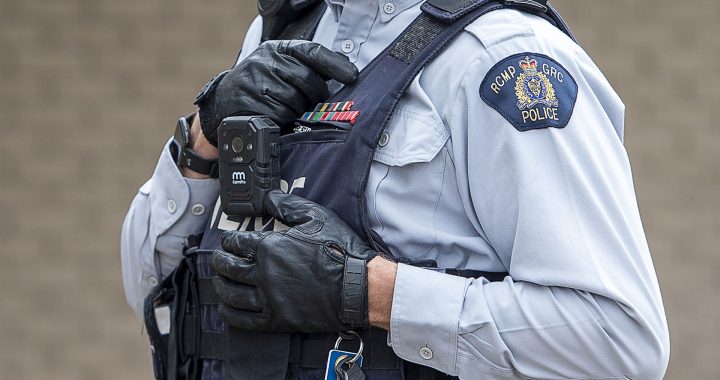APTN Investigates
The statue of Edward Cornwallis is gone. But for many Mi’kmaq and Indigenous people across Canada, the question remains: Is the bounty still on the books or not?
In late January, Halifax city council voted to remove the statue. It was taken down immediately afterwards.
Cornwallis, celebrated as the founder of Halifax, issued two scalping proclamations after he arrived in Mi’kma’ki in 1749. “Ten guineas for every Indian taken or destroyed.” He rescinded both bounties by the time he left in 1752.
But four years later, Governor Charles Lawrence issued another cash bounty on the Mi’kmaq in Nova Scotia.
“…a Reward of Thirty Pounds for every male Indian Prisoner above the Age of Sixteen Years brought in alive or a Scalp of such Male Indian Twenty five Pounds and Twenty five Pounds for every Indian Woman or Child brought in alive…”
This proclamation was never rescinded.
“It’s still there and what’s the big problem with revoking it?” asked Dan Paul, a Mi’kmaw Elder and author of “We Were Not the Savages.”
“I kind of think it’s got more to do with legalese than anything else, since the moral thing would be to revoke it and make a big splash in the media about doing so,” said Paul, “Rather than letting it sit there and smolder.”
Back in 1999, Mi’kmaw chiefs in Nova Scotia asked the province to repeal the bounty. By March of 2000, Michael Baker, the provincial minister responsible for Aboriginal Affairs at the time, put forward a resolution in the house, calling the bounties “repugnant and offensive.”
“Therefore be it resolved that the members of this Assembly invite the Government of Canada to confirm that the 1756 Proclamation is no longer of any force or effect; and Be it further resolved that we invite the Government of Canada to join our province as we express our sincere regret over past hostilities.”
The federal government responded by the following summer. Robert Nault was minister of Indian and Northern Affairs at the time. He sent letters to the province and Mi’kmaw chiefs assuring them that the bounty “is no longer of any force or effect.”
Nault wrote that the Peace and Friendship Treaties of 1760-61 “…commanded British officers and settlers to ‘forbear all acts of Hostility’ against these tribes of Indians…” rendering the “…1756 Proclamation inoperative.”
But there was little coverage of this at the time. Aside from APTN, the National Post ran a brief story with the headline, “Nova Scotia: Bounty officially ends.” And DanPaul wrote a column for the local newspaper, the Halifax Chronicle Herald, calling the federal response “All doubletalk, no action.”
And so the question of whether the bounty is still on the books has persisted.
“I can tell you one thing; it’s not forgotten,” said Paul. “And the Mi’kmaq don’t intend to forget it.”
Whether the bounties were rescinded or made moot by subsequent treaties, the larger issue for many Mi’kmaq is the commemoration of a man who issued them.
The statue of Edward Cornwallis was erected in 1931, part of a tourism drive by CN Rail.
Newspapers at the time wrote about “British sovereignty” and how the people of Halifax “have been faithful to the traditions of the British race.”
For decades, the bronze statue stood proudly on its granite pedestal overlooking a park also bearing Cornwallis’ name.
But after Paul added the Mi’kmaw narrative of history to bookshelves in 1993, the monument became a flashpoint for division and a symbol of genocide to the Mi’kmaq.
“I want people to know that he committed genocide against our people. He ordered, he wanted us wiped out,” said Mi’kmaw activist Rebecca Moore. “What kind of a man is that and why do we have a statue of him in the park?”
A common argument when Mi’kmaq challenge the colonial historical account of Cornwallis is that the bounties were acceptable in a time of war.
“It’s bullshit, okay?” said Paul. “And it’s a white supremacist argument in my opinion.”
There were hostilities between the British, and the Mi’kmaq and French, who were allied.
Cornwallis wrote to the British Lords of Trade about “the Mic-Macks” behaving “…of late in a most treacherous manner.”
When Cornwallis built a sawmill across the harbour to mill wood to build the garrison city of Halifax, the Mi’kmaq attacked and killed five or six men.
He asked permission from Whitehall in London “to take or destroy the savages commonly called Mic-Macks wherever they are found…to root them out entirely.”
Jon Tattrie is a journalist and author of “Cornwallis: The Violent Birth of Halifax.”
“He’s sailing into three different worlds at once,” said Tattrie. “To the French it is New France. To Mi’kmaw people, it’s still Mi’kma’ki. It’s still held physically by them, it’s still seen conceptually by them as their homeland.”
“To Cornwallis, it’s Nova Scotia. His mission is to found a fortress city which becomes Halifax to thwart the French ambitions here, to protect the British interests.”
To the Mi’kmaq, cutting down trees and building the saw mill, said Tattrie, “It was another occupation of their territory at an important river and seen as a deep act of aggression.”
“The British were invading and stealing Mi’kmaq territory,” said Paul. “The Mi’kmaq were people who had occupied this area of North America for over 10,000 years. They had a culture they were defending.”
Paul has often questioned why a bounty in warfare would extend to women and children, if the intent was not extermination.
And there was no bounty issued for French soldiers.
In the handwritten council minutes for Halifax, unfolds one story of the scalps being collected in 1753. Cornwallis was gone from Halifax. Governor Hobson had taken his place. And the bounties had been rescinded, though not everyone would have known that.
The account tells of two men who “arrived yesterday in this Harbour in an Indian Canoe and brought with them six Indian scalps.”
John Connor and James Grace tell of how they were attacked by Mi’kmaq, taken hostage and escaped. In doing so, they “first killed the woman and the boy” and four Mi’kmaw men.
Tattrie points to other records of Cornwallis dealing with bounty hunters like John Gorham and his rangers, a group of mercenaries that came up from New England to Nova Scotia in the mid-1700s.
Rebecca Moore, who traces her ancestry back seven generations to Mi’kmaw Chief Jean Baptiste Cope, who signed the Peace and Friendship Treaty in 1752.
“I’m really proud to still be here,” said. “Because if [Cornwallis] had his way, I wouldn’t even be here.”
In late January, she stood for hours in the cold to watch crews work to remove the statue of Cornwallis.
A celebratory moment for the Mi’kmaq.
“It’s a new day, it’s a new time,” said Moore. “And it’s the true spirit of peace and friendship.









